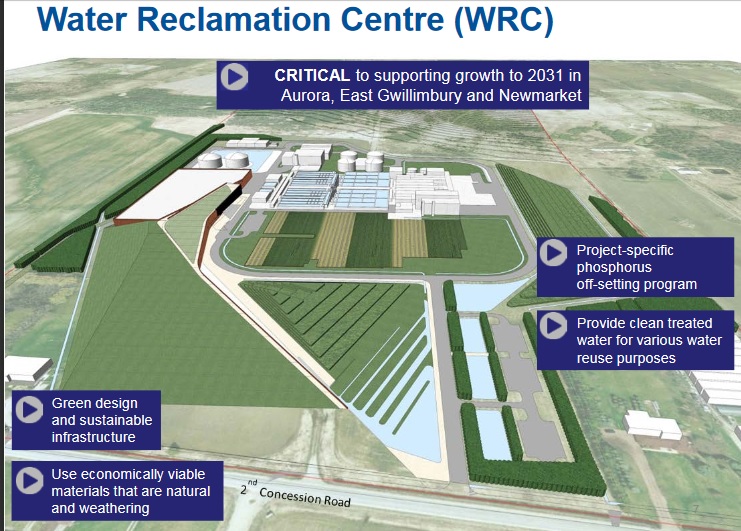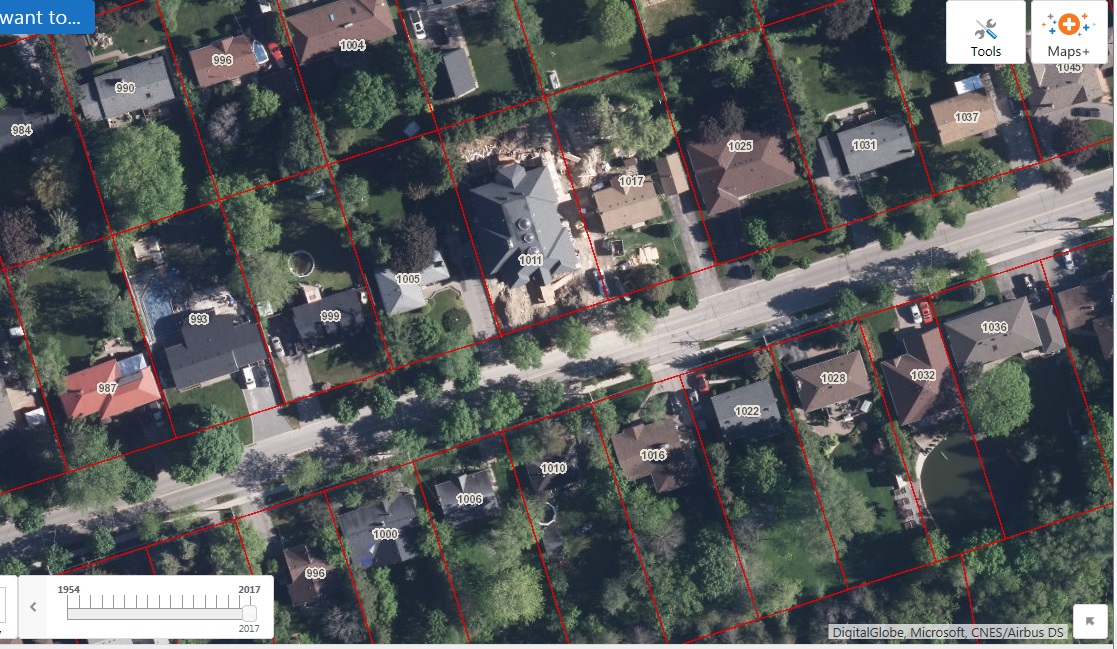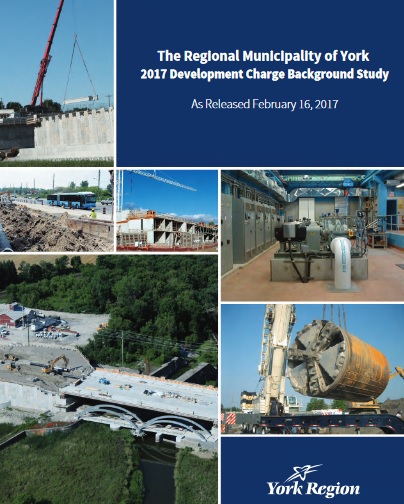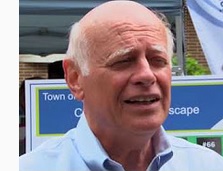- Details
- Written by Gordon Prentice
A little over four months away from the Provincial Election and the Ontario PCs are in meltdown.
The election of a new leader to replace Patrick Brown will take place on 10 March 2018 but how can this possibly happen when no-one can be certain who is or is not a Party member?
We are assured that’s covered. Voting will be through secure remote electronic balloting. This time, no fraudulent members. No phoney votes. 
The interim Leader, Vic Fideli, has ordered a “complete investigation” into the names and addresses of 200,000 members – more than half alleged by those in the know to be bogus.
What a sorry state of affairs.
Fair and Square
It is a noble tradition in our politics that people on the losing side accept defeat gracefully, often remarking that the victor won “fair and square”. (A phrase originating in the 16th century when “square” meant “honest”.)
Who could say hand on heart that Party selections across the Province under the leadership of Patrick Brown were anything other than blatant fixes and stitch-ups? Former PC candidates think so.
And so too does Vic Fideli.
"I wouldn't have done that (ordered an investigation) if I was completely satisfied… There is an overarching issue about these memberships that has caused me to ask for a complete analysis … right down to the IP addresses. I plan to root out the rot."
“Fixing this, and it needs fixing, will be a massive undertaking – but it is absolutely essential.”
Are we to suppose that this “complete investigation” will be done and dusted by 2 March 2018 when voting is due to begin to decide the new Leader?
Improbable
Under Brown’s leadership, party membership skyrocketed from 10,000 to an improbable 200,000.
Only a few days ago, the now departed and discredited PC President, Rick Dykstra, was still peddling the myth of a muscular Party bursting at the seams with members raring to go:
“Our Party is already full of 200,000 energized party members. This number will only continue to grow. We look forward to uniting behind the future Leader of the party.”
Writing in today’s Toronto Star, Martin Regg Cohn says much of this massive increase was entirely fraudulent: 
“… the political edifice that Brown built is a Potemkin house of cards, constructed on a foundation of fraudulent memberships and financial chicanery.”
Oh dear!
The Practice of Charity
So where does this leave Charity McGrath, the PC candidate for Newmarket Aurora?
Our own Riding was one of those convulsed by allegations of cheating.
Did she win fair and square?
Do pigs fly?
This email address is being protected from spambots. You need JavaScript enabled to view it.
- Details
- Written by Gordon Prentice
A series of unconscionable delays in granting approval to critical wastewater infrastructure - blamed by York Region on the Province – could see the Town engulfed in raw sewage.
The Region has been working for years on the “Upper York Sewage Solutions” project which is designed to provide sewage servicing for anticipated growth in Newmarket, Aurora and East Gwillimbury. It involves building a new water reclamation centre and a second sewage pipe (or “forcemain”) through Newmarket. The existing one is forty years old and if it were to fail there is no back-up. 
The second forcemain was expected to be completed by the end of 2019 and the Water Reclamation Centre by 2024 but these forecasts were based on information from the Ministry that approval would be forthcoming in early 2017.
That didn’t happen. In December 2016, the Province discovered it had a legal duty to consult with indigenous peoples, the Chippewas of Georgina Island, but was nevertheless confident this could be wrapped up by July 2017. It is still ongoing.
Eats money
The project eats money. So far, $65 million has been spent but the total cost of Upper York Sewage Solutions runs to an eye watering $714,575,000.
Last Thursday (January 18) the Regional Council in an exercise of collective hand-wringing met to decide what to do next.
So-called “servicing allocations” already ration sewage pipe hook-ups in Newmarket with developers waiting in a queue for approval. Developments are ranked by priority with the lowest expected to wait longest for connection to the sewers.
A report from the Region’s Environmental Services chief, the impressive Erin Mahoney, warns that a delay in getting a second forcemain in Newmarket could have cataclysmic consequences.
“In case of sewage spillage or surcharge in local collection systems due to either a forcemain break or high flow conditions, untreated sewage would either enter into natural water courses or potentially cause sewage to back-up in residential homes, creating environmental and public health concerns.”
She goes on:
“These risks materialised during the prolonged and high-intensity storm event on June 23, 2017 that resulted in sewage spillage and surcharge in local collection systems.”
Urgh!
Indignation
First to comment is Richmond Hill’s Vito Spatafora. He is full of righteous indignation. He reminds us it took the Minister over two years to realise the First Nation peoples had to be consulted. And we still don’t have a decision! With an election on the horizon he predicts everything will be going into limbo. How can we force the Minister to make a decision?
Ms Mahoney tells us the recent Cabinet reshuffle has certainly complicated things. She says she has left no stone unturned. I see the jowls of Regional Chair, Wayne Emmerson (below), quivering in agreement. But she says it is up to the Province to consult with the Chippewas. It is not something that can be delegated to the Region.
I learn that a report will be coming before the Council by the end of June suggesting “interim solutions” although it is difficult to imagine what these may be if the Gods turn against us and the heavens open in a prolonged downpour.
Ms Mahoney refers to Newmarket’s “Hold Tank”. I wince at the thought. She tells us darkly that it will hold things
“for days rather than weeks”.
Van Trappist Contemplates Redundancy
Now I see Newmarket’s Mayor, Tony Van Trappist, stir. Unusually, he is preparing to express a view.
He tells us it is a very critical issue. If the forcemain were to rupture
“there would be no redundancy”.
This is a good example of managerialist “Trappist-speak”. Translated, he too wants a second sewage pipe.
And the great man has thought of a way to prod the Province into action.
He says that in the event of a “sanitary sewage forcemain failure” which was the result of delay in approval then the costs should be recovered from the Province. They are to blame because they ignored us!
Drawing on decades of experience, the old banker chortles:
“We should never under-estimate the wallet as an effective listening device!”
Now East Gwillimbury’s Virginia Hackson weighs in.
She despairs there is no environmental approval and wants to focus on the interim solutions promised earlier by Regional staff. East Gwillimbury, like Newmarket, is a designated Place to Grow but they need additional capacity. Urgently.
Dereliction of duty
Now Aurora Mayor, Geoffrey Dawe, accuses the Province of dereliction of duty. He tuts and he scolds in his theatrical way and accuses the Province of going off the rails.
He points to Erin Mahoney’s background report and declares:
“This should be required reading for every elected official.”
He cries: Now is the time to go public!
Elected officials who for years resisted the intrusion of television cameras into their cosy meetings now want the public to get engaged and share their outrage.
What a delicious irony!
If the unthinkable happens, the cameras will certainly be rolling.
This email address is being protected from spambots. You need JavaScript enabled to view it.
- Details
- Written by Gordon Prentice
Town Hall officials last week confirmed that the Monster Home nearing completion at 1011 Elgin Street meets the Town's zoning standards. This has been a matter of some debate since March of last year. 
Back then, the Director of Planning, Rick Nethery, told me:
"Essentially the proposal (for the new building at 1011 Elgin Street) only required a routine building permit issuance as it complies with the relevant zoning requirements in respect of height, setbacks and lot coverage."
Because only a building permit was required there was no public consultation with neighbours nor with anyone else.
Construction blues
Round-the-clock building work has been going on since the summer of 2016. Some days, furious activity. On other days, less. It started with the excavation of a huge hole in the ground to accommodate the garage which sits under the house. The structure, still unfinished, towers over the neighbouring property whose deck and garden, previously secluded and private, are now overlooked. 
All proposed developments in Newmarket are subject to Council approval through the approval of site plans. But some categories of development escape scrutiny.
Councillors were never asked to take a view on this over-sized cuckoo in the nest in Elgin Street as it fell into an exempt category which would simply be waived through by the professional bureaucracy.
Residential structures on existing lots:
"such as a detached dwelling, semi-detached dwelling, or duplex if the application does not involve a change to a more sensitive land use"
are exempt from site plan control. All the developer needs is a building permit.
Site Plan Manual
Tomorrow (Monday 15 January 2018) Councillors will be asked to review and then give their seal of approval to a revised Site Plan Manual whose stated aim is to speed up the approvals process.
This is a noble intention. Getting approval can take forever while all sorts of outside agencies are consulted. Anything to inject a sense of urgency into things is to be applauded.
Unfortunately, the Manual still doesn't address the Elgin Street issue. The Town should have had the debate on residential infill and whether any site plan control should be applied and in what circumstances rather than the other way about. Cart before the horse and all that.
We've all known for ages that some infill development in residential areas simply doesn't fit in. Indeed, Newmarket's planners presented a report to councillors in 2012 identifying the issues and posing possible solutions. In the intervening five years we have witnessed paralysing inactivity. Indeed a report presented to councillors in October last year on the issue regurgitated much of what was said in the earlier document.
Workshop this month
During the short debate on Infill in Stable Residential Areas last October the Director of Planning, Rick Nethery, held out the possibility of a Council workshop this month. The public would then be consulted in March or April with any new policy being in place by June
"subject to any appeals that could arise".
Personally, I think that timetable was always for the birds. It seemed too good to be true.
In the meantime, what is unfolding at 1011 Elgin Street could happen over and over again. Older neighbourhoods with houses sitting on bigger than average lots are routinely targeted by smart developers with an eye to the main chance.
Ward 3 councillor, Jane Twinney, concerned about what was happening in her patch, asked for a review of policy on infill development a full ten months ago and we are still waiting.
Hibernation
This is election year when municipal bureaucracies everywhere go into hibernation, leaving difficult policies for the new Council to address. But, surely, the time for slumbering is over.
With every passing moment, Morad Dadgar moves ever closer to completing his huge Monster Home which we are assured complies with the relevant Zoning By-law.

In March 2017, the Director of Planning told me the site plan showed a generous front yard set-back of 9.88 metres when the Zoning By-law stipulated a 7.5 metre minimum. Now the latest figures tell me the front yard set-back has mysteriously increased to 11.44 metres.
The by-law sets a maximum permitted lot coverage of 35%.
In March 2017, this was 31.33%
Now, curiously, it has crept up to 33.6%.
I have no idea how this happened.
But we are told conclusively that 1011 Elgin Street complies with the Town's zoning standards and that, as I lamented last year, is precisely what is so worrying.
This email address is being protected from spambots. You need JavaScript enabled to view it.
Read the report on the proposed revised Site Plan Manual here at page 32.
Update on 15 January 2018: The Town’s Director of Planning, Rick Nethery, told councillors today that the planned Council workshop on infill development in stable residential areas would be held in March 2018.
- Details
- Written by Gordon Prentice
Should we feel sorry for developers who are asked to make "voluntary contributions" to the Town to help pay for such things as trails, community entrance signs and public art? 
These so-called "voluntary contributions" can cost a developer many thousands of dollars. In 2014, at the start of this Council term, the Town collected $628,300 in voluntary trail contributions from developers. This is big money.
But what if the developer says no? Do they have an option? Is it a shakedown? Is it legal?
Perhaps these "voluntary contributions" are written off by developers as a necessary cost of doing business in Newmarket. Who knows?
Extortion
A couple of weeks ago an email comes winging in from cyberspace, complaining about the Town extorting money from developers. Attached to that email was another, dated 28 November 2017, from the Town's Chief Administrative Officer, Bob Shelton, directed specifically at developers:
"I wanted to discuss Community Benefit contributions with you.
"Newmarket has been moving forward with significant investment in the community well beyond what can be supported by the tax base and other sources of funding. These investment [sic] include accelerated trail development, community entrance signs, and unique public art features. These Community Benefit investments greatly contribute to Newmarket's growing reputation as a place to live, work and visit. They assist in the attraction and retention of investors, business, employees and residents."
"We have been able to make these additional investment [sic] into our community creating a sought after quality of life through generous contributions made by citizens, businesses, organisations and land developers. This has been viewed as a win-win as these community benefit amenities assist in such areas as marketing products and maximising value."
"The Community has benefitted from contributions towards these investment [sic] by way of lump sum contributions to contributions in the $1,600 to $2,500 range on a per unit basis depending on the unit size. The Town would be able to offer a charitable donation receipt or recognition to your company for this voluntary contribution to be used by the Town for Community Benefit projects."
"Based on your recent advice to the Town it would appear that you are moving forward with your proposed development. Could you please consider assisting the Town with this program and advise me of your intentions in this regard. I will also try to reach out to you to discuss our program later this week."
No sewage hook-up means no development
The day before (27 November 2017) councillors had a report before them on so-called "servicing allocations". Until a development - even one with planning approval - gets permission to hook up water and sewage pipes it cannot proceed.
In Newmarket, because of capacity constraints arising from the delay in completing the Upper York Sewage Solutions project (which comes on stream in 2024) these servicing allocations have to be rationed. Developments are listed by priority.
Three proposed developments (King George, Eagle and Gorham) are down as priority 4 but are fast tracked after votes moved by Tom Hempen and Dave Kerwin. As a result, these developments can now be hooked up, leapfrogging over others.
After the vote Bob Corleone’s letter goes out to developers asking for cash. Dare they say no?
In 2015, Steve Deveaux, the Chair of BILD (Building Industry and Land Development Association) tells MPPs during the Committee stage of the Smart Growth for our Communities Act (Bill 73):
"We found that some municipalities successfully levied additional charges on the industry for a variety of proposed projects with questionable public policy merit. This resulting voluntary agreement is only agreed to because there is no other way of getting approvals, permits or servicing to the project."
It takes two to Tango say the developers
BILD has been pressing the issue for years. In 2014 they tell the Province:
"For a contribution to be voluntary it must have two willing parties. It is usually the case that the party paying these charges is not willing. Rather, the payment is often made because it would take too long to appeal it to the courts or the OMB and it also creates a difficult working relationship in communities where there will be ongoing future relationships."
Shelton assures me there is no funny business:
"For development related discussions, my approach is to confine these discussions to the CAO's office (Chief Administrative Officer) which takes place outside of and after the development is in a position to move forward..."
Even so, the Bill is supposed to get rid of these "voluntary agreements".
No additional levies
59.1 (1) A municipality shall not impose, directly or indirectly, a charge related to a development or a requirement to construct a service related to development, except as permitted by this Act or another Act.
The Bill 73 Committee hears from a number of municipalities who say these "voluntary payments" are a good thing and should not be outlawed. MPPs are told they are needed to bridge the gap between what comes in through development charges and the actual costs of growth.
Indeed, I recall Bill Hughes, the widely respected Director of Finance at York Region, telling us that growth does not pay for growth. That has always been the monumental fiction. 
In fact, the Municipal Finance Officers of Ontario, quoting research by others, tell the Bill Committee:
"Development Charges now only pay for approximately 80% of growth related costs. That puts significant pressure on municipalities, which are faced with huge infrastructure deficits as well as demands for new services, and trying to rehabilitate and maintain existing infrastructure."
Despite pressure from the Association of Municipalities of Ontario and from some of their member authorities urging the Government to look again at s59.1, Ministers hold fast and the section now appears in the Development Charges Act 1997, as amended.
Law of the land
It is now the law of the land. But what does it really mean?
In York Region's 352 page tome on the 2017 Development Charge Background Study, published in February this year, we are told the Act prohibits voluntary payments:
"The amendments to the Development Charges Act 1997 prohibit the imposition of additional levies, commonly understood to mean voluntary payments or extra-legal agreements, related to a development. Staff are investigating the definition of voluntary payment agreements to ensure the Region remains compliant in the future. Existing voluntary payments are grandfathered."
I don't know if the detectives in York Region's finance department have now unearthed the definition on which so much now turns.
Treasurers to certify compliance
Despite this opacity, Municipal Treasurers across the Province are now doing their best to certify that their Reserve Funds are now in compliance with s59.1 - even if they are not entirely sure. In the City of Vaughan we learn:
"The City has, to the best of its knowledge, not imposed any voluntary payments or required construction of a service not authorised under the Act." (The Development Charges Act 1997, as amended.)
I am left wondering how "voluntary" payments can be imposed? I go through life relying on ordinary English usage but once the lawyers start mangling the language we can all get lost.
Markham worries that the prohibition of voluntary contributions might impact on
the receipt of funds for public art and public realm.
This is what Shelton wants the money for - among other things.
Closing the door on "voluntary" payments
Councillors across the Province are now being told, in variations on the same theme, that s59.1 is intended to close the door on "voluntary" payments that may have been sought by municipalities "outside the legislative framework".
So, in Newmarket, are the voluntary contributions sought by Bob Corleone "outside the legislative framework" or not?
Is it OK to lean on developers for cash to fund "public art"?
The Town has been upfront in asking for cash for years, even to the extent of telling developers (in 2015) what the Town's "base expectations" are for voluntary contributions for trail, public art and community projects.
Everything is kosher
I look for a statement from Newmarket's resourceful and inventive Treasurer, Mike Mayes, certifying everything is kosher but I can't see it.
That's not to say it doesn't exist. It could be staring me in the face.
Bob Corleone is now inviting me to meet the Treasurer if I need more information to help me understand the process.
He is making an offer I can't refuse.
This email address is being protected from spambots. You need JavaScript enabled to view it.
- Details
- Written by Gordon Prentice
On 20 March 2017 Newmarket councillors reaffirmed their existing policy of getting their remuneration paid one-third tax free. 
They rationalised. They justified. They agonised. But, at the end of the day, after all the hand-wringing, they voted to keep their special tax free status.
Now, cruelly, the Federal Government has decided to take away this generous concession as from 2019. The move was buried in the 2017 Federal Budget and applies nation-wide. It was under-reported.
The Association of Municipalities of Ontario in a news release earlier this month was still peddling the myth that:
"Municipal elected officials across the country have been able to decide to use a 1/3 tax exemption in lieu of claiming expenses related to their duties."
That may be true in some saintly municipalities tucked away, out of sight, in remote corners of Canada. But it isn't true here in Newmarket where our Mayor, Tony Van Trappist, claims for every butter tart consumed at the Maid's Cottage.
Removing tax-free status is long overdue and should be welcomed by all elected officials.
The current system makes it virtually impossible to compare the remuneration of elected officials in different municipalities - especially with those that have ditched their tax free status.
This complexity suits the Van Trappists of this world. The old banker kept his Hydro remuneration off the Town's accounts for years until I forced the issue and his additional $12,000 a year is now routinely reported. This kind of subterfuge cheats the voters.
We need good elected officials to take important decisions on our behalf, often shaping our Town for decades to come.
They deserve the rate for the job.
So long as it doesn't include tax free status.
This email address is being protected from spambots. You need JavaScript enabled to view it.
Page 161 of 286